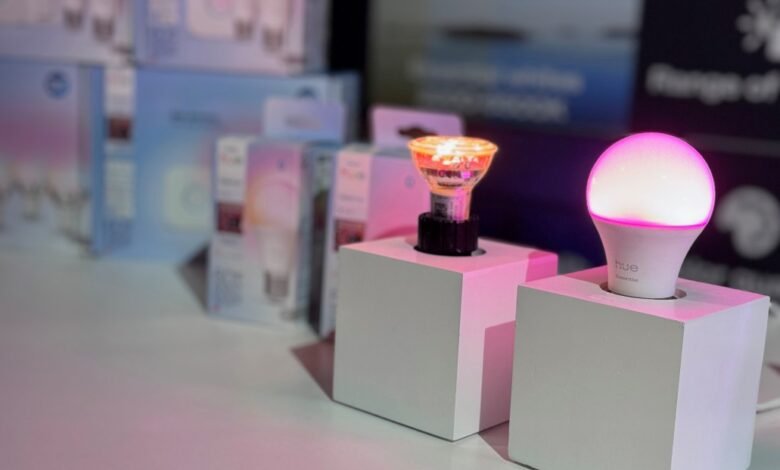Philips Hue Unveils Major Overhaul to Rival Budget Competitors

▼ Summary
– Philips Hue has launched a new Essentials line with lower-cost smart lights, including bulbs and light strips, to compete with budget rivals.
– The Essentials line offers reduced features like less deep dimming and no color-matching guarantee but maintains high-quality standards and Hue ecosystem compatibility.
– All new Hue bulbs now support Matter-over-Thread for direct connectivity to major smart home platforms without a bridge, while still supporting Zigbee for advanced features.
– Hue introduced a new OmniGlow Strip Light with uniform lighting and higher brightness, alongside cheaper gradient and ultra-bright strip options.
– These updates aim to broaden Hue’s appeal by lowering prices and removing the bridge requirement barrier, while still not being the cheapest option available.
Philips Hue has launched its most significant product overhaul in recent memory, introducing a new budget-friendly Essentials line, support for Matter over Thread connectivity, and dramatically improved light strips. This strategic shift aims to broaden the brand’s appeal while maintaining its reputation for reliability and performance, directly challenging a growing field of affordable competitors.
The new Essentials collection offers a simplified range of white and color ambiance bulbs and light strips at a fraction of the cost of Hue’s premium offerings. A single Essentials A19 bulb retails for $25, with multipack discounts bringing the per-bulb price down to around $15. By comparison, the company’s flagship color-changing bulbs start at $60 each. While these more affordable options don’t dim as deeply or guarantee the same level of color consistency across product generations, they still meet Philips Hue’s quality standards and integrate fully with the existing Hue ecosystem.
According to company CTO George Yianni, the Essentials line is designed to deliver very good color performance without the premium guarantee of perfect color matching between old and new bulbs. He emphasizes that Hue’s higher-end products are engineered for precision that most competitors can’t match, a key reason for their steeper price. The flagship line is also receiving updates, starting with a new, more efficient A19 bulb featuring what Hue now brands as ChromaSync color technology.
Notably, all new Hue bulbs, both Essentials and premium models, now include a next-generation connectivity chip that enables Matter-over-Thread support. This allows the lights to connect directly to Matter-compatible platforms like Apple Home, Google Home, and Amazon Alexa without requiring a Hue Bridge. However, the company isn’t abandoning its Zigbee-based ecosystem, which Yianni says still offers superior performance for advanced features like dynamic scenes, entertainment syncing, and the new Hue MotionAware capability.
The introduction of Thread provides customers with more flexibility. Users can opt to integrate Hue lights into broader smart home networks via Matter or continue using the dedicated Hue Bridge for a more robust, feature-rich experience, or even do both simultaneously.
Beyond bulbs, Philips Hue is raising the bar with its new OmniGlow Strip Light, which the company proudly calls the brightest and best light strip available. Priced from $140, it uses ultra-dense micro-LEDs to produce completely uniform illumination without the typical spotty appearance of conventional light strips. With a maximum output of 4,500 lumens over 10 meters, it’s twice as bright as previous Hue strips.
A more affordable gradient option, the Hue Flux Strip Light, starts at $69.99 for three meters, a notable reduction from earlier models. An Ultra Bright version delivering up to 6,000 lumens will be available for $99.99. Outdoors, the company is expanding into popular categories like neon flex strips, permanent roofline lighting, and all-weather string lights, all offered at more competitive prices.
While Hue still isn’t the cheapest option on the market, brands like Govee offer color-changing Wi-Fi bulbs for under $10, this new direction significantly lowers the barrier to entry. More importantly, it gives existing Hue users greater flexibility to expand their systems without breaking the bank, whether they want to add accent lighting to a pantry or illuminate an entire patio.
(Source: The Verge)





